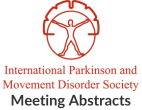New onset movement disorders following COVID-19 infection
Objective: To determine the prevalence and phenotype of movement disorders following SARS-CoV-2 infection in hospitalised individuals. Background: Although movement disorders, including parkinsonism, following SARS-CoV-2 (COVID-19)…Myoclonus and Encephalitis as an Adverse Event of mRNA COVID-19 Vaccine
Objective: We aim to report a case of myoclonus as an adverse event mRNA COVID-19 vaccine. Background: There have been multiple reports of neurological adverse…Lance – Adams Syndrome: a Case Series from Vietnam
Objective: To describe clinical features and treatments in patients with Lance–Adams syndrome (LAS) in Vietnam. Background: Lance–Adams Syndrome (LAS) is a rare neurological disorder. Because…Childhood onset progressive myoclonus and ataxia in a patient with novel TBC1D2B gene mutation
Objective: Myoclonus, ataxia, tremor and dystonia have been described in some patients with TBC1D2B gene mutation. In this paper we present a patient with progressive…A Poor Prognosis for Acute Post Hypoxic Myoclonus with Status Epilepticus: A Case Report
Objective: This article reviews the diagnosis, management, and prognosis of acute Post Hypoxic Myoclonus (PHM) with myoclonic status (MS) and status epilepticus (SE) based on…Unusual Causes of Reversible Myoclonus: A Video Based Case Series
Objective: To report three patients with atypical causes of myoclonus which were completely reversible. Background: Myoclonus is characterised by sudden brief jerky movements caused by…Evaluation of unsteadiness in patients with dystonia
Objective: To evaluate the cause of unsteadiness in 4 patients with segmental dystonia Background: Mild impairment of postural control has been described in focal and…Creutzfeldt-Jakob Disease misdiagnosed as Corticobasal degeneration
Objective: We described clinical, radiologic, and neuropathological findings of a patient with Creutzfeldt-Jakob Disease who presented antemortem with clinical features suggestive of corticobasal degeneration. Background:…Myoclonus Phenomenology and its Response to Antiepileptic drugs in Patients with Sub acute Sclerosing Pan encephalitis
Objective: To assess myoclonus phenomenology and its response to antiepileptic drugs in patients with SSPE. Background: Myoclonus is one of the characteristic features of Sub…Movement disorders in children with progressive myoclonic epilepsies
Objective: To analyze the clinical aspects, radiological features and evolution of myoclonus and other movement disorders (MD) in children with progressive myoclonic epilepsies (PMEs). Background:…
- 1
- 2
- 3
- …
- 9
- Next Page »
